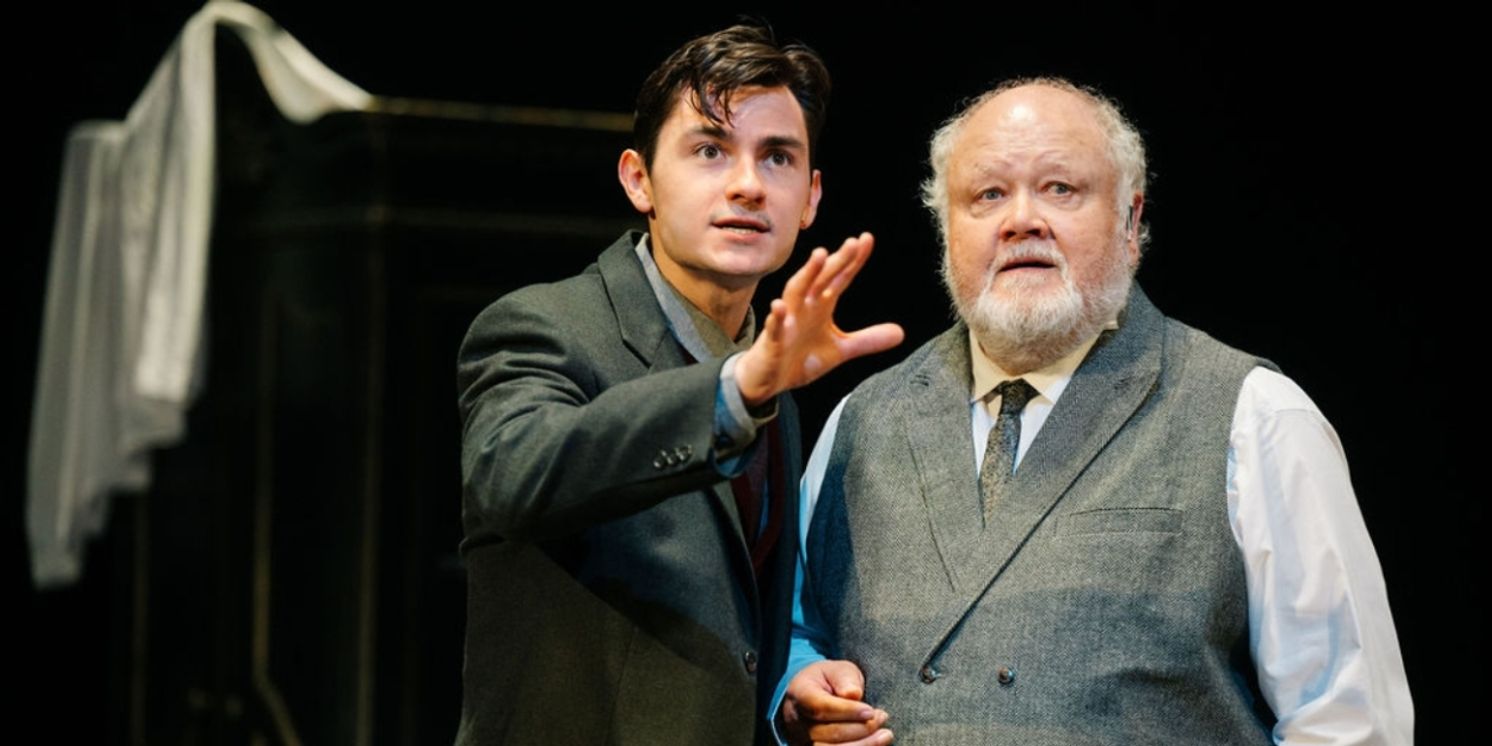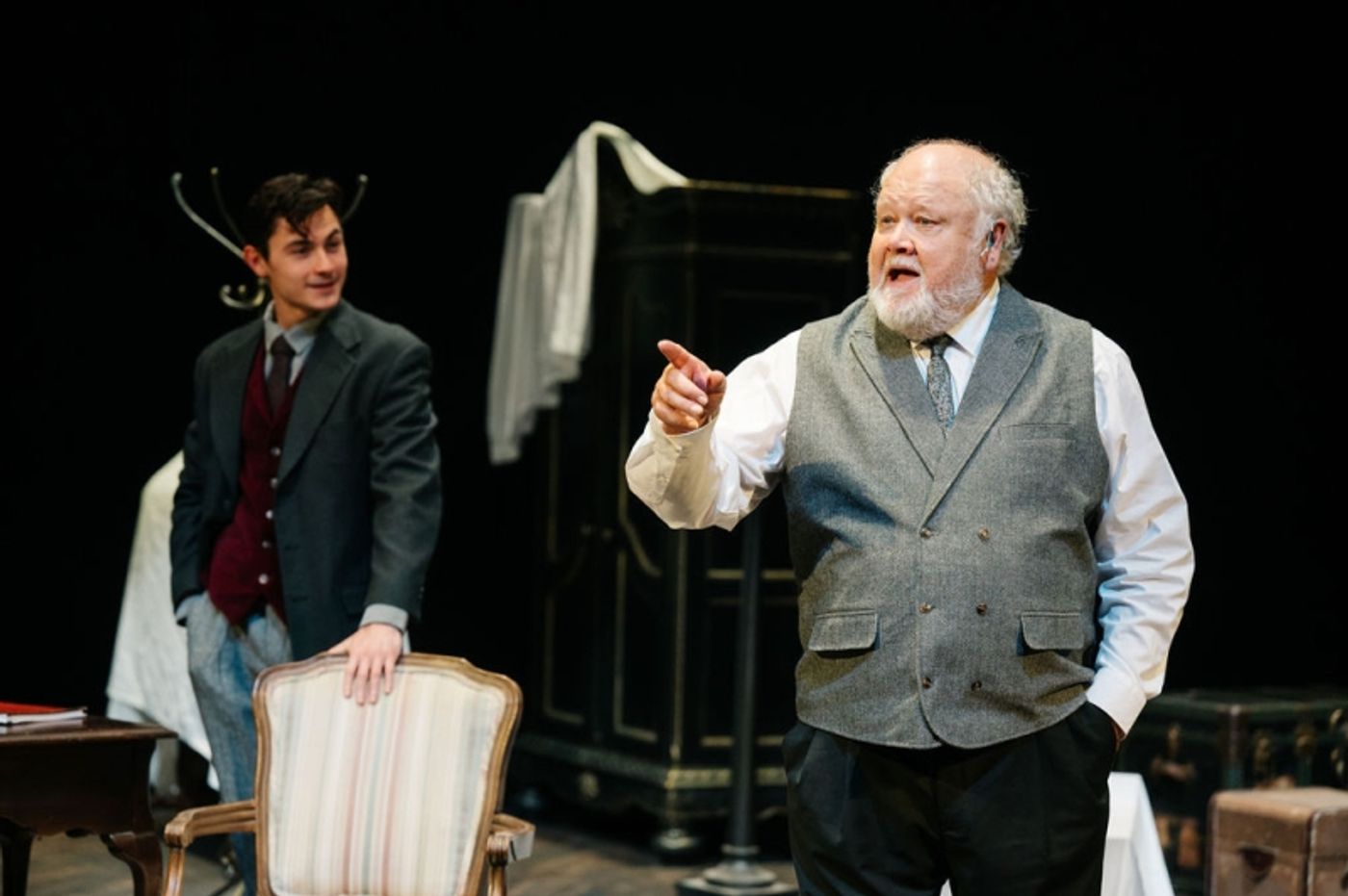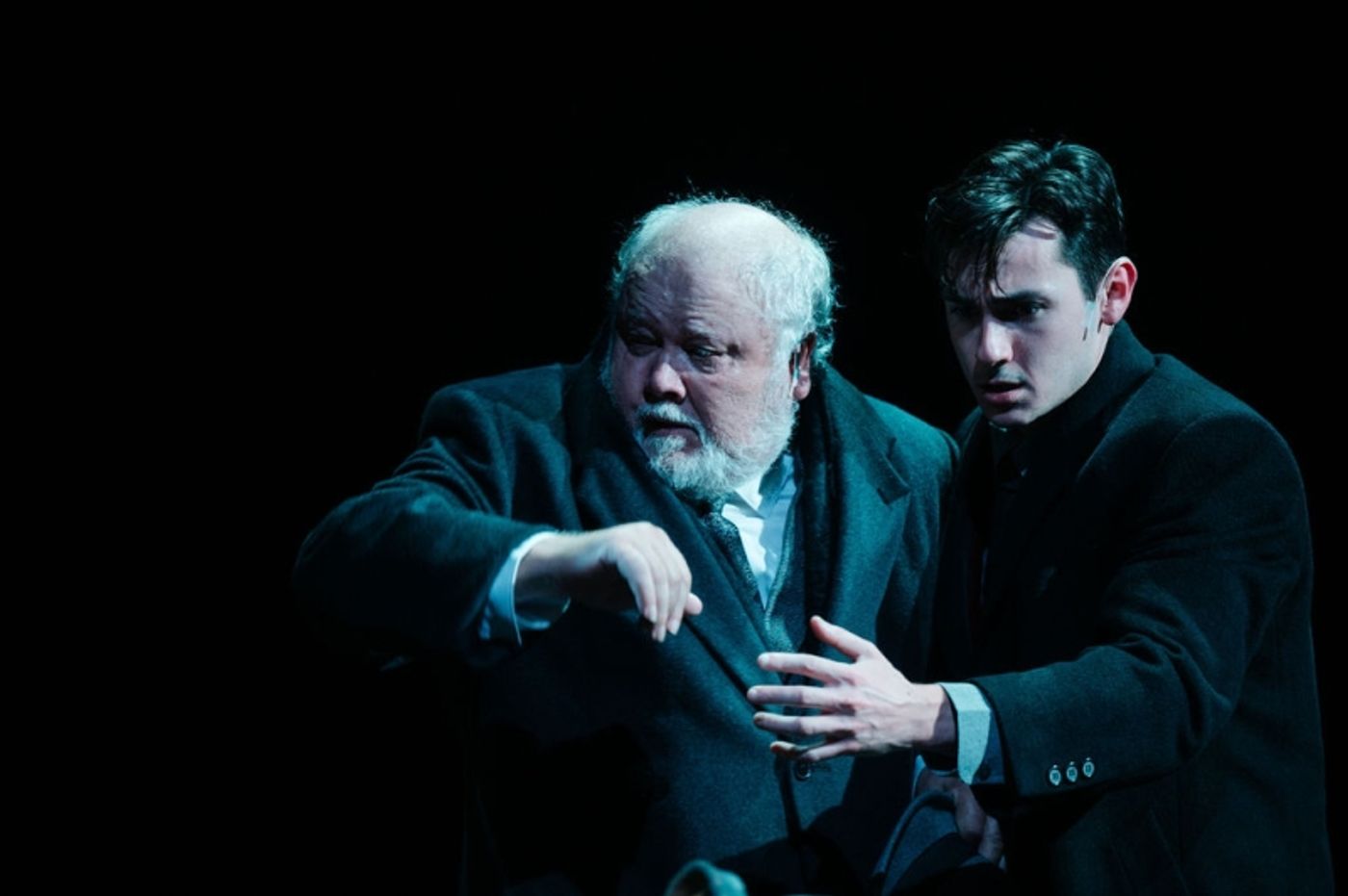Review: THE WOMAN IN BLACK at The Keegan Theatre
The production runs through November 17th

As October slowly crawls towards All Hallows’ Eve, the veil between our reality and the realm of spirits wears thinner. Or so they say. At the Keegan theater, a tear in that veil is on display for DC-theatre goers in The Woman in Black.
The piece follows Kipps (played by Robert Leembruggen, though listed as "Actor" in the text), a man haunted by an experience from his past, and a young theatre-maker/actor (played by Noah Mutterperl, though listed as "Kipps" in the text) he hires to help him tell his tale— hoping to finally escape his nightmare by sharing it with others. The two go about preparing and rehearsing a theatrical production that regales Kipps' experiences with the titular Woman in Black. It's meta— a play within a play. Things get crisscrossed a bit, as the young theatre-maker in Kipps' play, plays Kipps, and Kipps plays everyone else. The two delve into this original text and in doing so, in a way, transport themselves back in time, and to a place full of shadow and lingering dark.

Audiences are first greeted by the Victorian-inspired set, designed by the director and dressed by Cindy Landrum Jacobs. It immediately set the atmosphere for the show and was evocative of Andrew Wyeth's painting The Witching Hour, and Alejandro Amenábar's visual masterpiece The Others. The majority of the stage was a circular revolving turntable, which spun throughout the show. It featured a fixed doorframe and door, a lamp, a chandelier, and other mutable pieces and props. It was delightful to see the period props serve different purposes, given different lives by the actors and imagination. A piece of luggage may be a seat, a chest, or a tombstone in a 30-minute span, working equally effectively for all purposes. Depending on which direction the stage was spun, different buildings were created— churches, offices, trains. It was all handled very simply and creatively by director Josh Stricklin, and played seamlessly and believably by the actors.
The use of the turntable was also particularly enjoyable. It changes the space quickly when needed, provides a visual transition, or is used to denote distance. There is a piece of wonderful blocking that occurs in a scene where the two characters are traversing from a church to another part of town, simply weaving in and out of the set/preps as the stage spins. It was so simple and yet communicated so effectively just exactly where these two were traveling. Direct representation is inconsequential, it's about the image.
A further level of verisimilitude is added through lighting and design, by Sage Green and Brandon Cook, respectively. The sonic world of the show (or the "recorded sounds") filled in the gaps where needed. It became people, vehicles, weather, and even a dog named Spider that, combined with believable acting and pantomiming, felt like a third character. The lighting too is used, though is allowed to slip into unreality, accentuating mood and tone rather than looking "real." Costumes were used to effect, providing, especially for Leembruggen, to put on proverbial and literal hats as he switched characters. With his hats and accessories, he too changed his voice and accents. Not in any exaggerated way, but in a real, down-to-earth way. It was rather enjoyable. One inexplicable garment, though, is worn by Mutterperl— a bright red jacket reminiscent of the military or even a circus ringmaster. It's used as an overcoat and doesn't pull the audience out too much, but seemed out of place, and at its worst, a little distracting. The opposite however is true of the Woman in Black. Two unlisted actors sported the all-black, lacey ensemble, melting into the dark stage and house at times. It was amusing to be watching a scene and notice a little movement, track it, and realize she was moving through the space, just a few paces away from the action of the scene. It was appropriately spooky for the piece, and time of year.

This design, its mutable nature, speaks to the nature of the show and its content— our reality is mutable, changeable. Things beyond comprehension slip in and out of our periphery, just as The Woman in Black does Kipps'. Just as the actors play myriad roles, people slip in and out of our stories, our lives, and life itself.
And so, the two reenact the tale that so plagues Kipps. Kipps, when a young man, was called away from London to sort out the affairs of a late Mrs. Drablow, who presided in an estate near a small town, the house only accessible by a road which is covered by water at high tide. After a few chilling experiences, Kipps becomes paralyzed with fear and unsure of his reality. He investigates the tragic history of the estate and after some horrible encounters, is able to escape it, and The Woman In Black, though he is unaware for how long these happenings will lurk in the shadows behind him for the rest of his life. It will haunt him.
The show is in many ways about trauma. Horrible things, seen and experienced that live with us day and night. How they build up inside us, eat away at us, and change us fundamentally. In this way the show champions storytelling, and sharing. One must not bear the weight of ghosts, trauma, or grief alone. In fact, if they open themselves up to the world, to audiences, to a friend, they might find a weight lifted (or they might pass on a cursed specter, but that's a bit literal).
The show invites the audience (quite literally) to step into the world of imagination. To suspend their disbelief and enjoy a ghost story within a play, within a play. It is evocative of the ancient human tradition of gathering in a dark room at night and whispering scary stories to each other. The stylish technical aspects of the show in tandem with the wonderful world Leembruggen and Mutterperl paint with their performances allow the audience to slip into that spooky room and hear a ghastly tale. The two performers are a treat to watch, they play the scenes as needed, and clearly understand each other the text on an alchemical level.
The show rounds for 90 minutes without an intermission. Information on tickets can be found at Keegan's website at keegantheatre.com.
Reader Reviews
Videos

